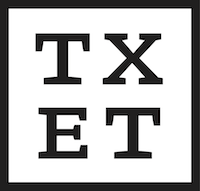On occasion of my first summer workshop at Berlin University of the Arts they asked me about my background.
1. How did you become a writer and lecturer?
I am a natural born writer – or rather, a reader. From the very first moment I could identify letters and got to know about their function, I was fascinated. By their shapes also, their sheer beauty. I read like crazy as soon as I could, everything from street signs to my parents’ books. I practiced Schönschrift in school and my favourite subject was Deutsch: learning about language, speaking about texts and writing my own little essays.
That was back in Venezuela, where I grew up. Visiting a German school, speaking street Spanish, with multicultural friends, I learned how to communicate in several languages, bridging cultural and continental gaps constantly. I moved 23 times before my 30th birthday – probably the biggest challenge in being flexible, adopting to new people and places. Consequently, I studied languages to become a translator.
What I do today derives directly from that.
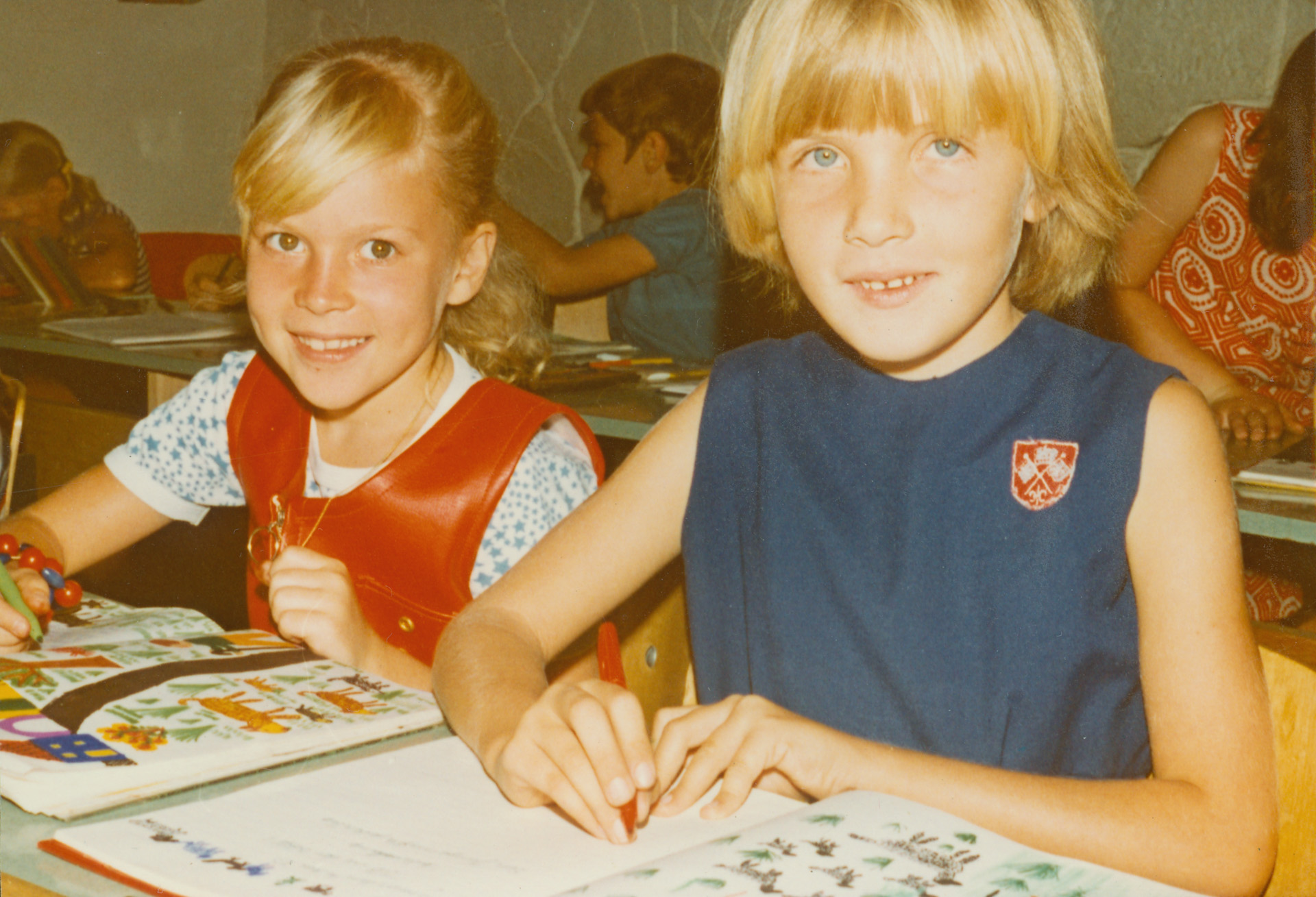
Here you see me (red dress) in 2nd grade elementary school at Colegio Humboldt, Caracas. The photo was taken by my father once when he picked me up; the girl next to me is Dörte Müller. Our ground-floor classroom had big open windows. I loved that school! I’m extremely thankful to visit it for seven years.
2. Could you tell us more about your background?
In my long-term side job as a student, studying languages, I worked as a graphic designer. So I learned everything about type and typography and layouts and lettering and printing and concepts and consulting with clients. It took me some years as a designer and desktop publisher in a Hamburg marketing agency before I found out about writing both as my dream job and my core talent.
Later on, a Berlin-based design agency became the perfect place to be: Edenspiekermann (SpiekermannPartners when I began in 2008), with Erik Spiekermann as the most important person to meet in my career. Here it all came together: the beauty of letters, the beauty of content, being designed in a way everything becomes even more relevant, and, again, more beautiful. My writing seemed to make more sense. I’m thankful I could work with Erik. I loved being part of his multi-faceted, international team, and I am happy I could contribute to their growth.
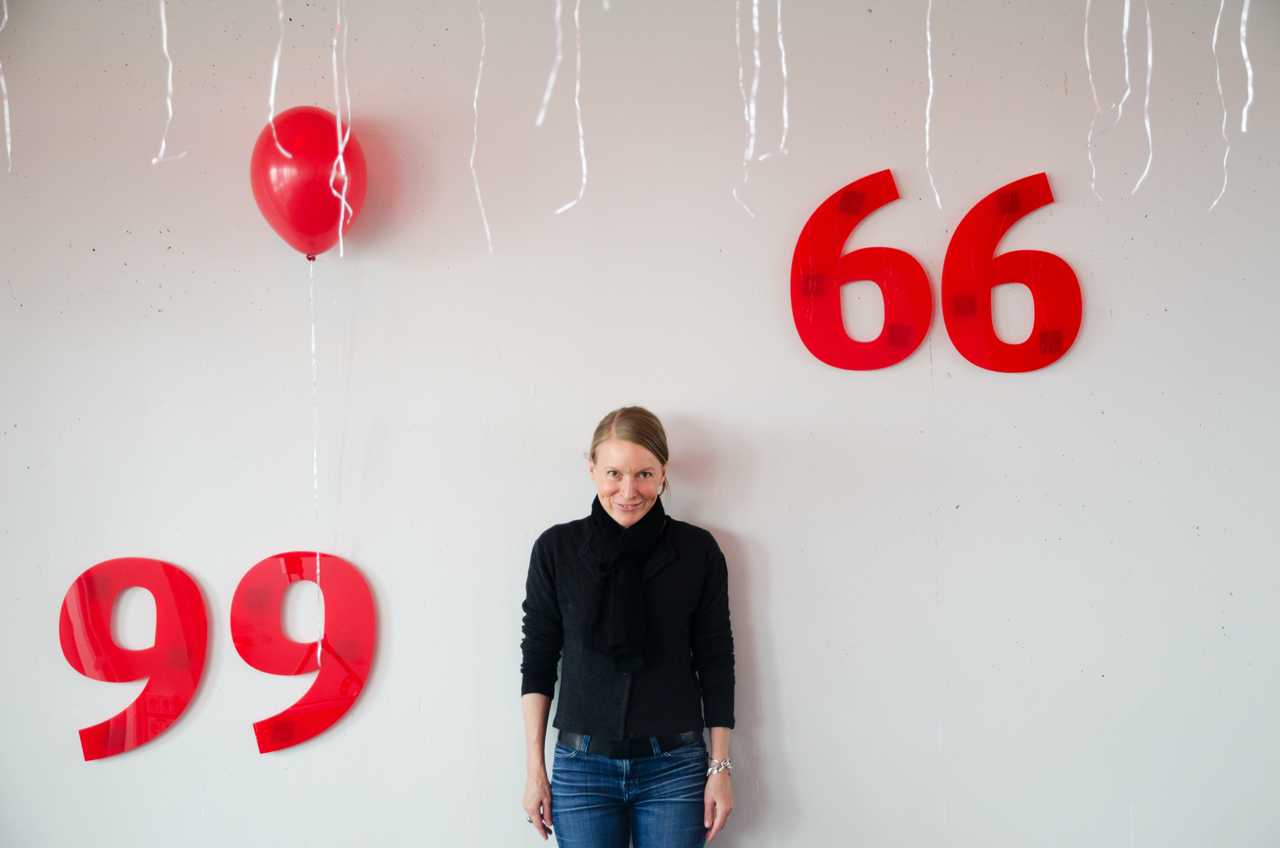
This is me in the Edenspiekermann tower on Potsdamer Straße, when we celebrated Erik Spiekermann’s 66th birthday. I turned the numbers so they form German quotation marks. (Photo taken by Markus Kirsch, as far as I remember.) Read more about Erik’s attitude in my interview with him.
3. Writing = Design. Creative Copy Writing Workshop: What is the project about? What are your main ideas and purposes?
The phenomenon Text and the German term Texterin mean more to me than plain “writing”, much more than being a “copywriter”. My profession is not about content creation, target groups and marketing in the first place. To me, dealing with language in a profound, prolific, and yes, also professionally useful way is much closer to art than to advertising. Text is language, designed; Texten ist gestalten mit Sprache. In English, the terms Design Writing and Creative Copywriting seem to suit this best.
In short: language is the most wonderful tool to life, to work, and to design with! This is my mission. This is what I want to transmit in all of my projects and teaching.
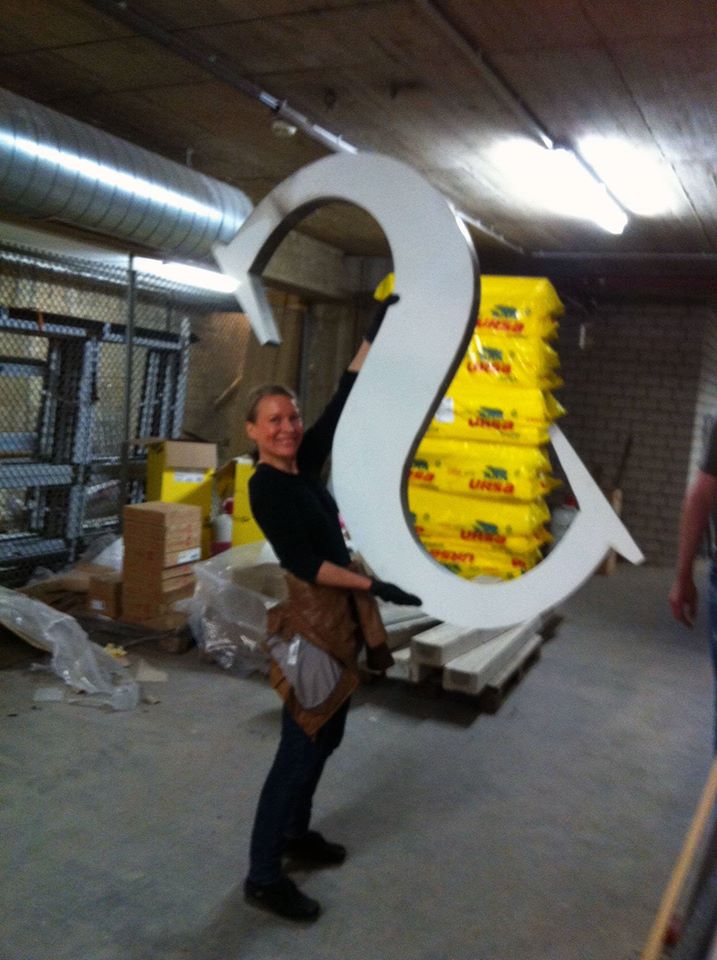
In the cellar of former Tagesspiegel office at Potsdamer Straße 98 in Berlin: we saved the letters of their logo, which had been mounted on the building’s tower for decades. Today, visit the Tagesspiegel letters in the Berlin letters museum. Learn more about the Buchstabenmuseum and my partner in crime, Luc(as) de Groot, who also took this photo.
4. What or who inspires you most?
Everything I see, read or hear is – well, not necessarily “inspiring”, but interesting. The streets of Berlin are full of verbal and visual information. The public space. Shop signs, street signs, the way people speak!
This is one reason I deeply love public transport. I listen to people. Families, tourists, groups of friends, young and old, loving or less loving couples, true Berliners, enthusiastic ex-pats, Kreuzberg youngsters, Mitte hipsters, whatever cliché and non-cliché becomes true. Becomes words and voices. And they all unite in public.
Then there are those unique Berlin bus drivers. They are the best! Commenting on people’s behaviour on the bus and around. I collect their quotes and when I use the bus a lot, I tweet some, once to a degree that friends asked me if I work for the BVG, the Berliner Verkehrs-Gesellschaft, our public transport organization; which I don’t. But I truly love the BVG.
My warmest recommendation, to make the most of inspiration out-doors: go by foot or go by bus. Use public transport wherever you are. It’s fun, plus there are many more good reasons to do so.
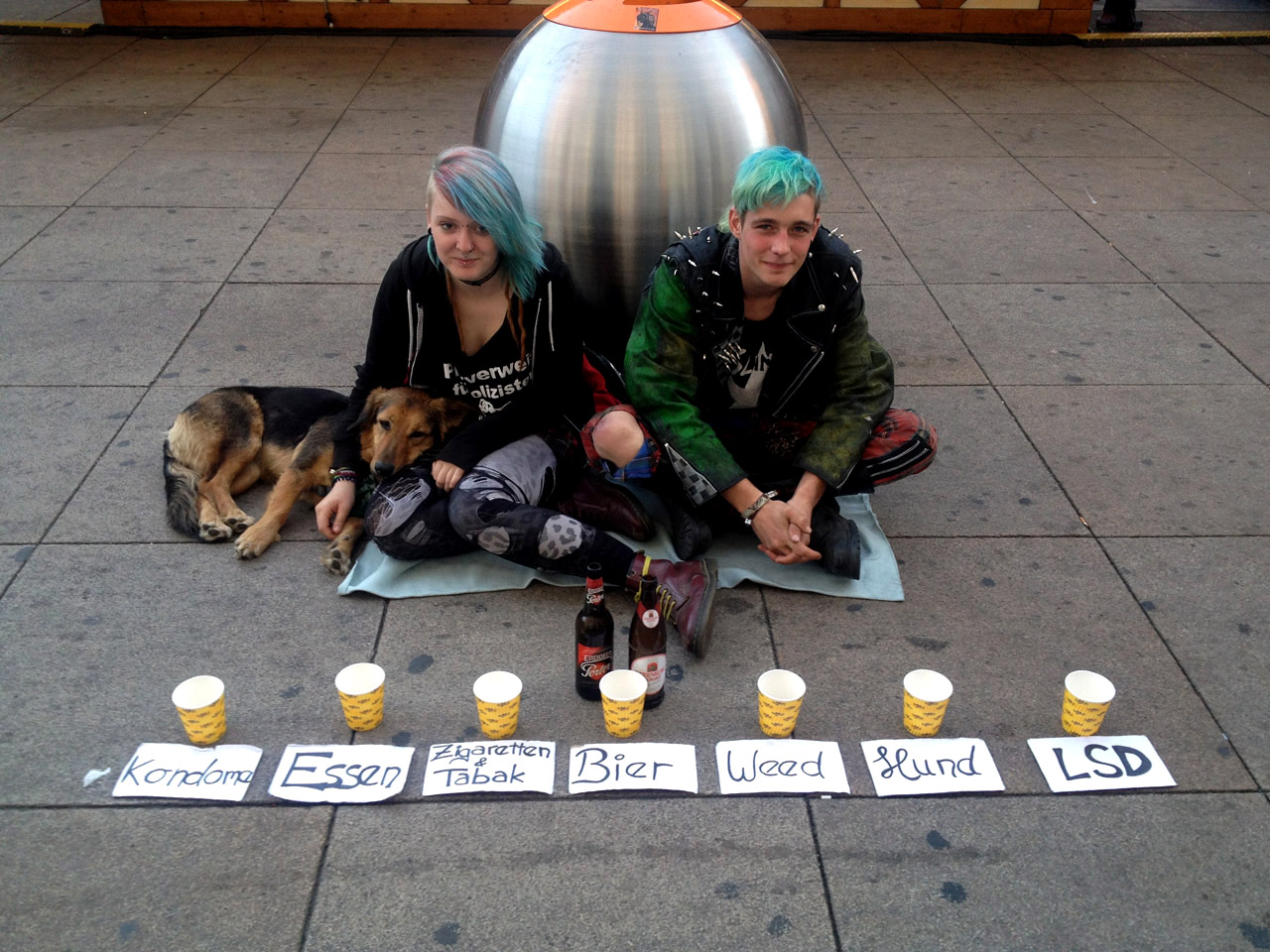
Nessy and Basti at Berlin’s Alexanderplatz in 2015. I was struck by their “menu” of daily needs, and the beauty of how they visualized it. Perfect communication! Very willingly they told me their story – and became a tourist attraction at once.
5. What do you think will the course bring its participants and why should they participate?
Each and every one of us, to some degree or the other, practices reading, writing, talking and listening. In everyday life, in our professions, in art and business and politics. Language is something we all make use of, more or less consciously. We constantly do. Language is the tool, the one cultural technique that unites us all. Language is basic to humankind and comprises the world.
Especially designers, people who love to create useful and aesthetically pleasing things, should be able to deal with words in the same creative way they do with other elements in their lives.
At least, do it consciously! Be aware of your language. Your verbal abilities will be essential for presenting yourself and for making the most of your projects. With words, with a distinct verbal identity, you add to your whole appearance, improving your personality and performance. And it is fun! It does not have to be complicated. Do not be afraid; I help you to get started. One of my most important lectures: Don’t be afraid of mistakes. They always happen and we all have our faults. We are human.
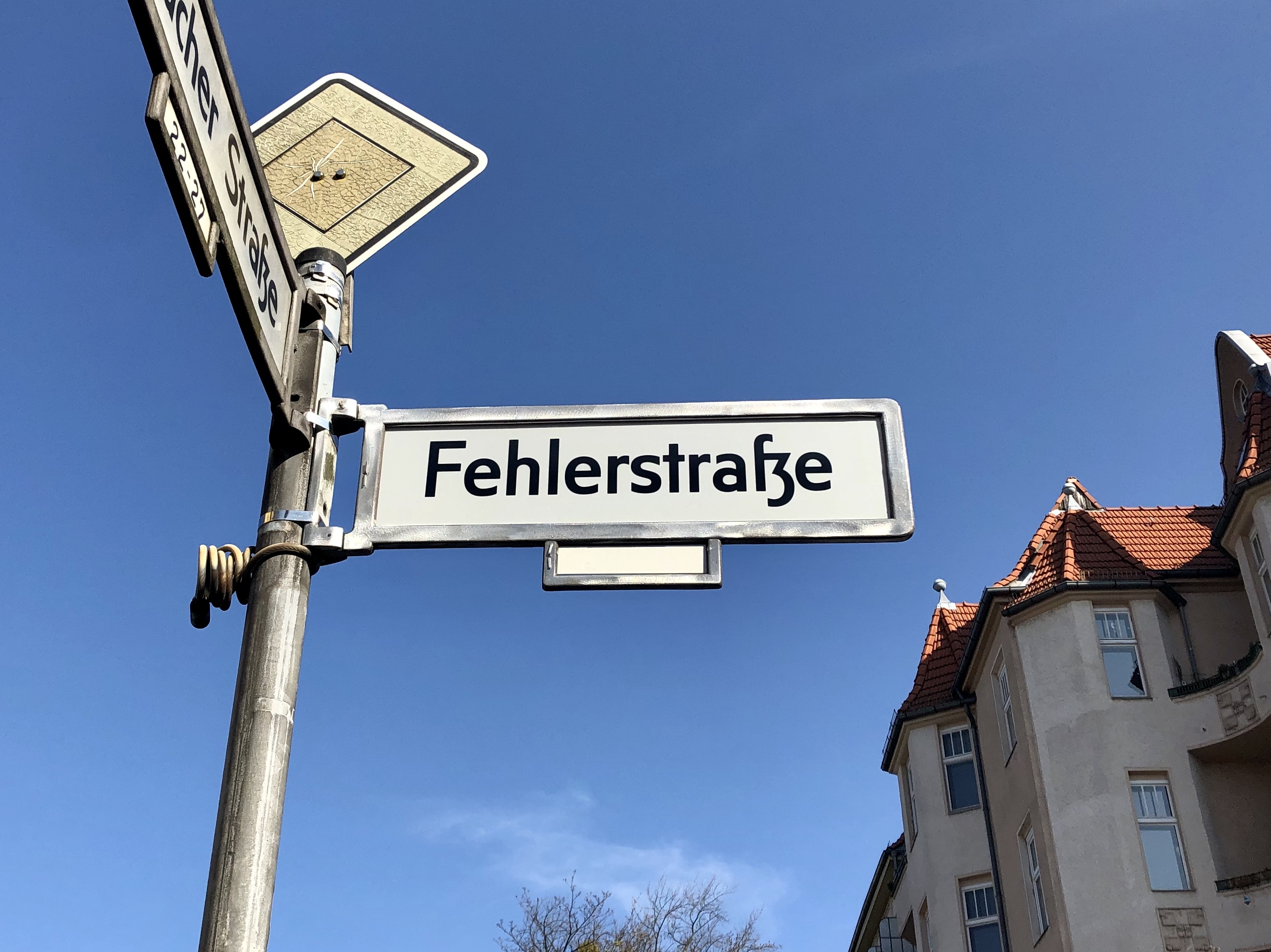
A street sign in my Berlin neighbourhood, literally saying “Fault Street”. It reminded my of the expression auf dem Holzweg sein, to be on the wrong track.
6. Any book/movies/artwork recommendations?
I have lots of recommendations. Books, mostly. Read! This would be my main advice. Read everything. Find out what you like, and why – no matter the genre; fiction, the news, magazines, graphic novels, online, offline, whatever. I prefer books though. Some books come as life savers and I don’t want to miss them.
This is best for successfully dealing with words – and with other people. Reading is the precondition for writing, for knowledge and for intellectuality. It does make deepest sense to ask yourself: what do you like to read (or hear)? What does irritate, hurt or disturb you? How do you use language? How do other people? What are their intentions? No need to mention current politics and the horrible development they take in some (well, actually most) places, language being a crucial part in it. The tone becomes rougher, the methods harder, let’s be aware of this.
The good news is: you can do a lot about it. Protect yourself from misunderstandings and manipulations. Make proper use of language and discover what you can achieve. Language is crucial for your private and professional life. Words are most relevant for your relations and for your success in public, on the job, on social media. Make words your friends! Therefore, reading is best. It’s as simple as that.
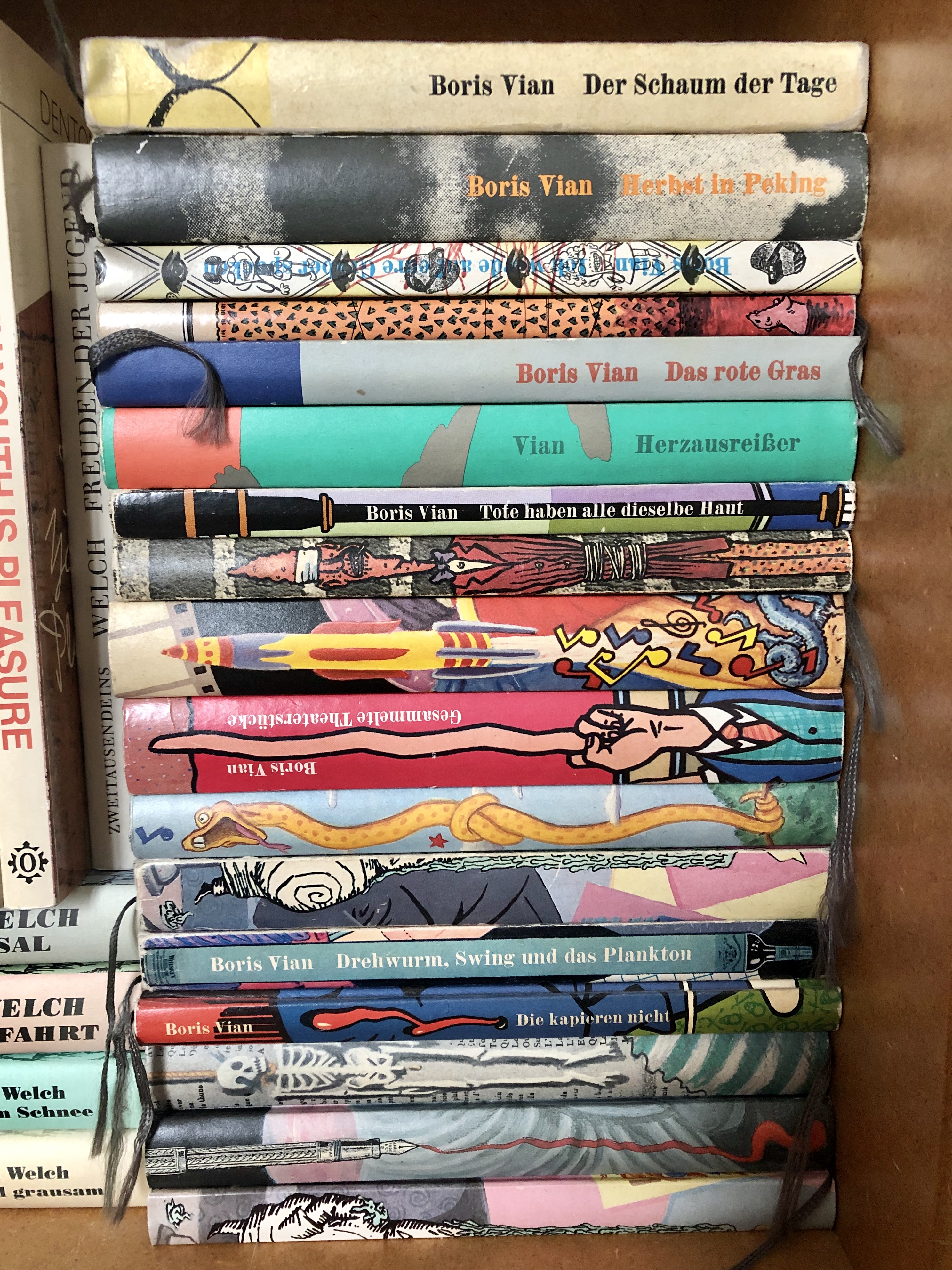
At 16, I met my first love in literature: Boris Vian. Now that I rediscovered the French author on occasion of his 100th birthday, I was reminded of his musical and political ambitions. In fact, the use of language and the attitude people have inevitably go together.
7. What changes do you currently feel in your (artistic) everyday life due to the Corona Pandemic?
One thing I like about the current situation is that it helps us to concentrate. It helps us sort out which elements of our lives are relevant, and which are not. It changes priorities. Commissioned work went down, so I did a lot of things I wished to do long since: clean up my desk, sort out staples of paper, and, most of all, spend days at my bookshelf. Indulge into my books. Read poetry. I meet less people and I concentrate on what I love most: reading and writing. This is wonderful.
For my professional life, this seems to be a loss, but for my personal and yes, mostly for my artistic life it is a great improvement. I like to be “locked down”. I discovered how I enjoy being secluded. I learned a lot in the recent months, I found lots of new inspiration – and: I developed new ideas for my teaching.
The only thing is that I’d rather meet my students personally than online. To me, this is the one sad thing about the current situation: not getting to know my new students in person.
But I’m also curious, like always. My writing exercises, my lecturing and teaching will surely function well online, but how to create a similarily intense and trustful working atmosphere? How will we do? Who will be amongst my first online participants, and what will the group spirit be like?
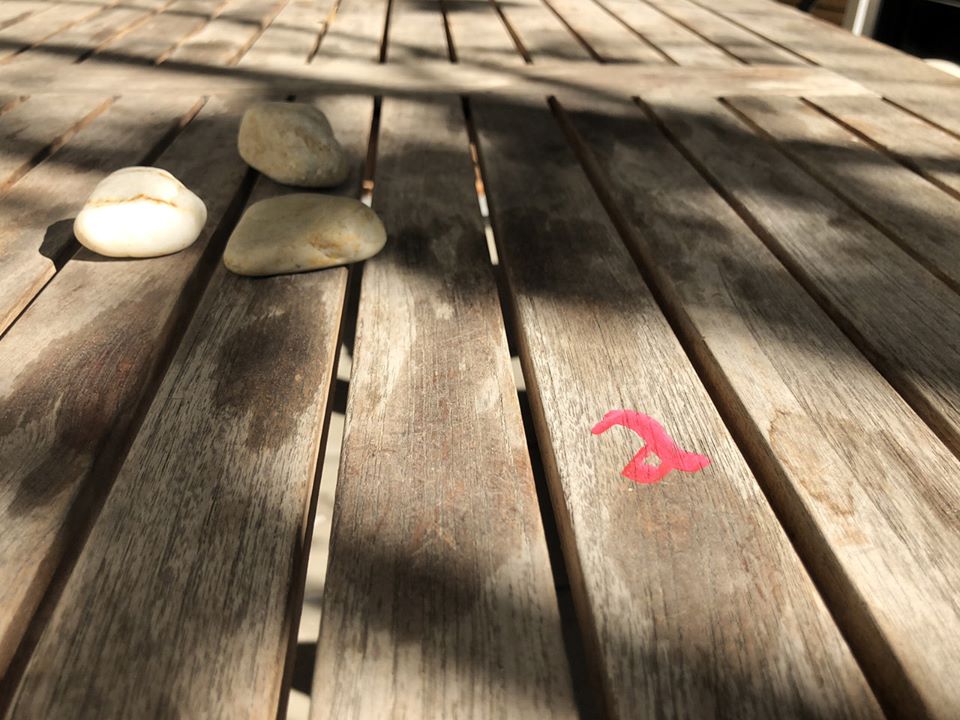
Looking forward. There is a magic spell at each beginning.
Herzlich willkommen!
My regular students at Berlin’s University of the Arts are always rather diverse, from several cultural backgrounds, sharing German as their lingua franca. In my experience, this is even more fun. It is extremely fascinating to share different cultural approaches when it comes to words and to the functionality of words. Speak to strangers, communicate with foreigners; it will add to your knowledge about language as a tool. It will increase the intensity of what we do in the workshop, and it sharpens our minds.
After all, language is always about translating. We interpret and we transfer thoughts to words to meaning. Words carry both information and emotions, depending on our personal experience. Thus, different cultural and linguistic backgrounds bring a special attention to the course – and several layers of poetry.
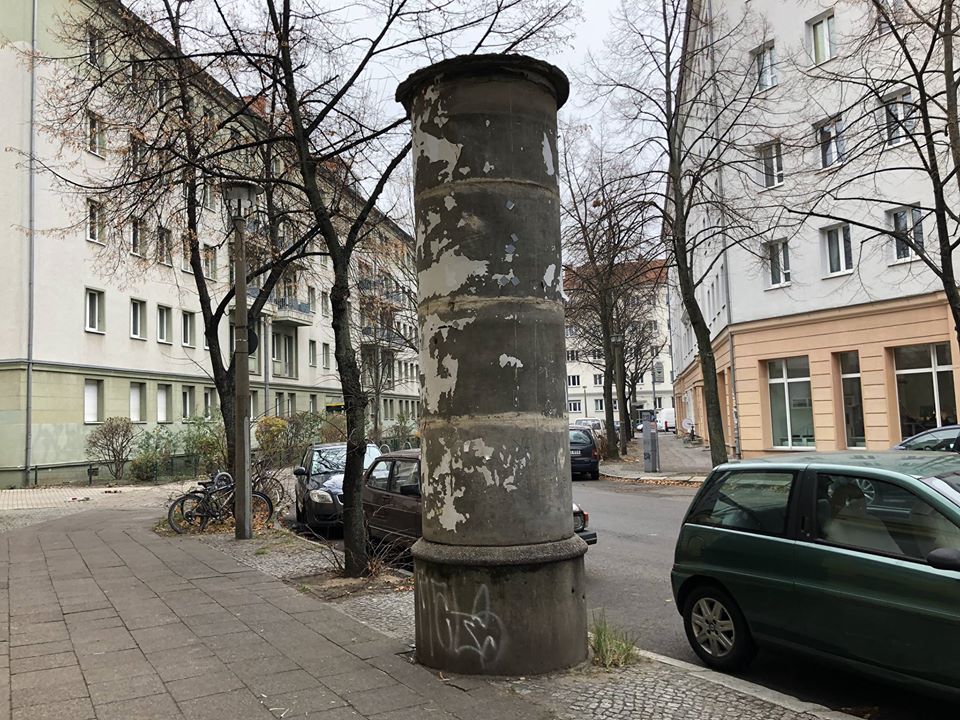
The famous Litfaßsäulen of Berlin, formerly a simple, straightforward means of public information for everyone, spread throughout the city, plastered with posters of cultural announcements, news, trivia, have recently been replaced by modern marketing columns: metal, glass and plastic. Illuminated, rotating, expensive. No pictures.
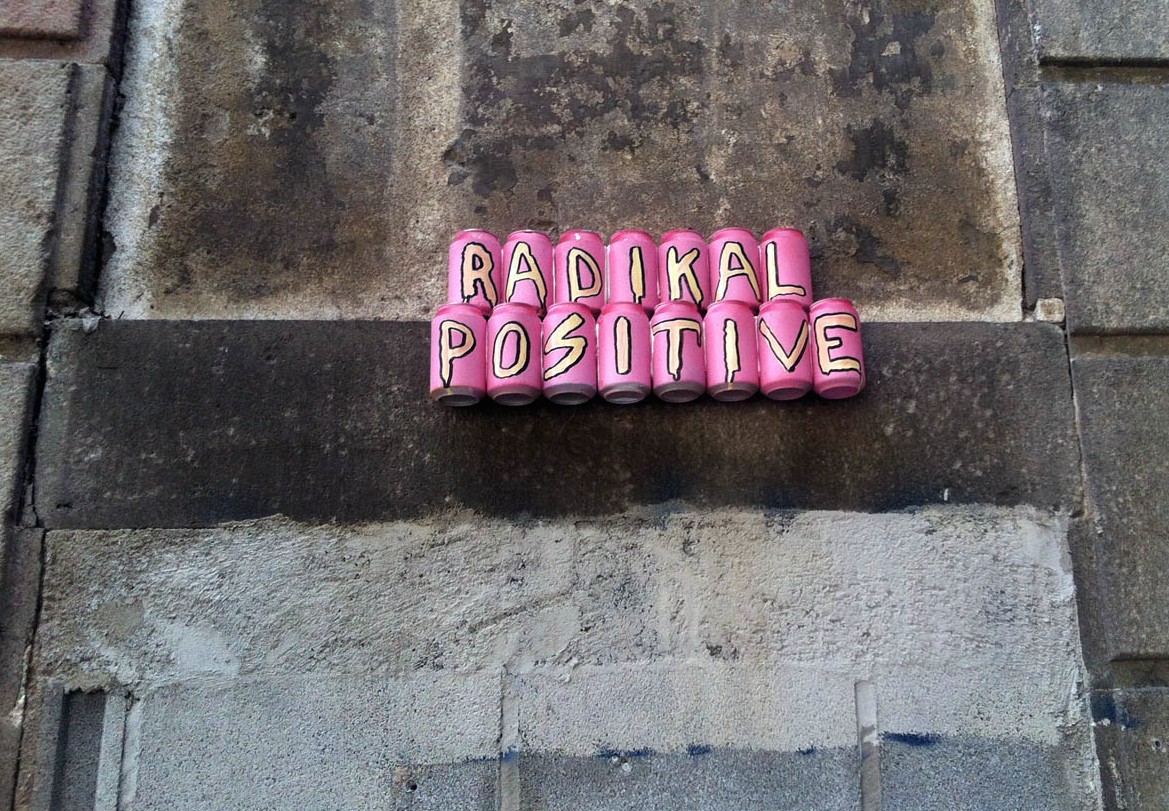
One last example of my countless findings in the streets of Berlin. I collect words and all kinds of verbal, written impressions; many of which I use in my lectures.
All pictures taken by Sonja Knecht except where noted. The questions (10 questions to choose from) were given to me by University of the Arts Berlin Career College in June 2020, to present me and my creative writing workshop in social media. On this occasion, being kindly forced, it was interesting to reflect my inspirations and my approach to teaching.
#SonjaKnecht #TXET #love #language #letters #read #write #teach #repeat #designwriting #verbalidentity #creativetools #creativeindustries #visualcommunication #verbalcommunication #culture #culturaltechniques #literature #inspiration #everydaylife #recommendations #books #BorisVian #ColegioHumboldtCaracas #Venezuela #Edenspiekermann #ErikSpiekermann #Interview #Tagesspiegel #Berlin #Alexanderplatz #BVG #Buchstabenmuseum #theloveofletters #livingwithletters #text #workshop #online #bsu2020 #berlinsummeruniversityofthearts
